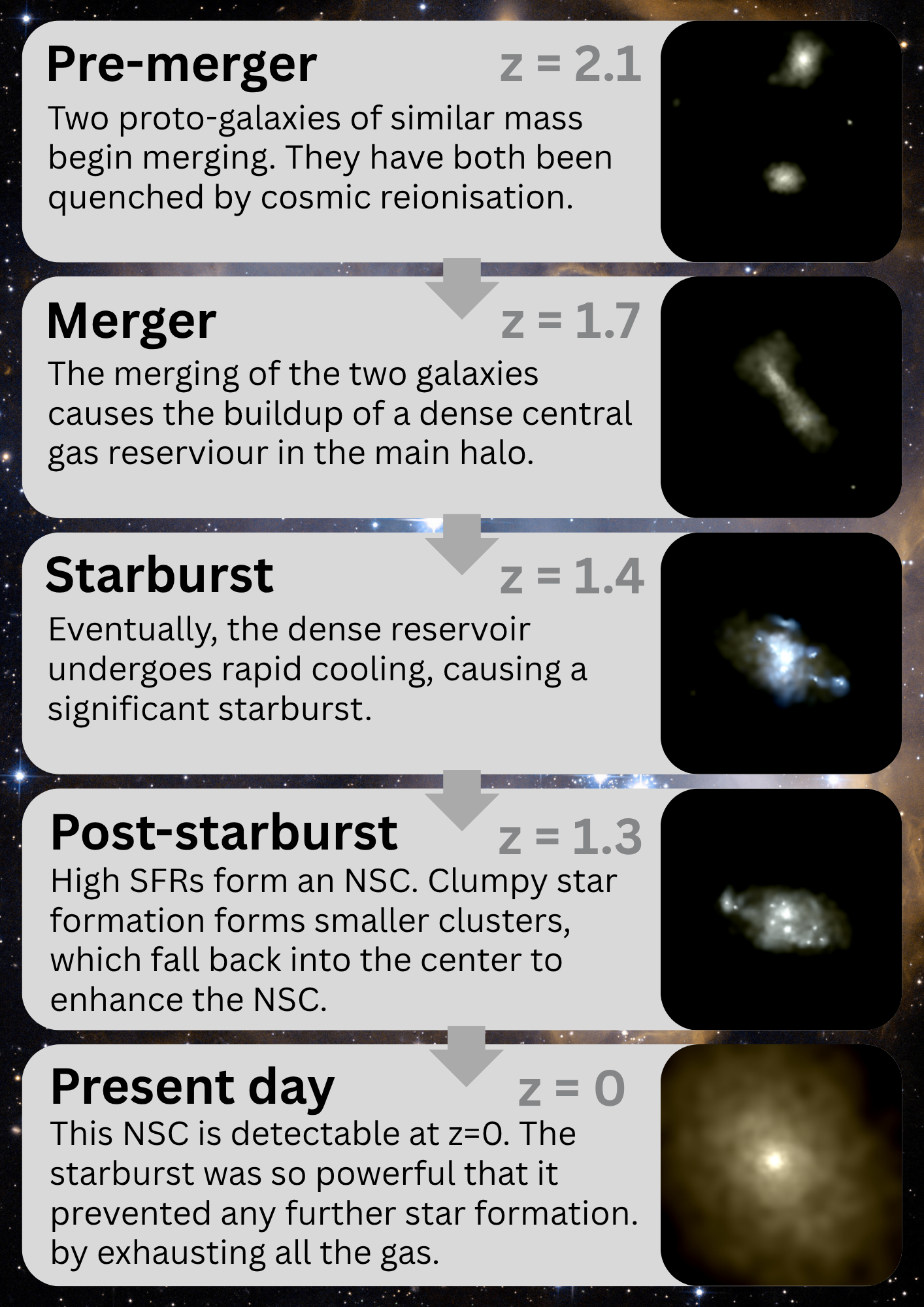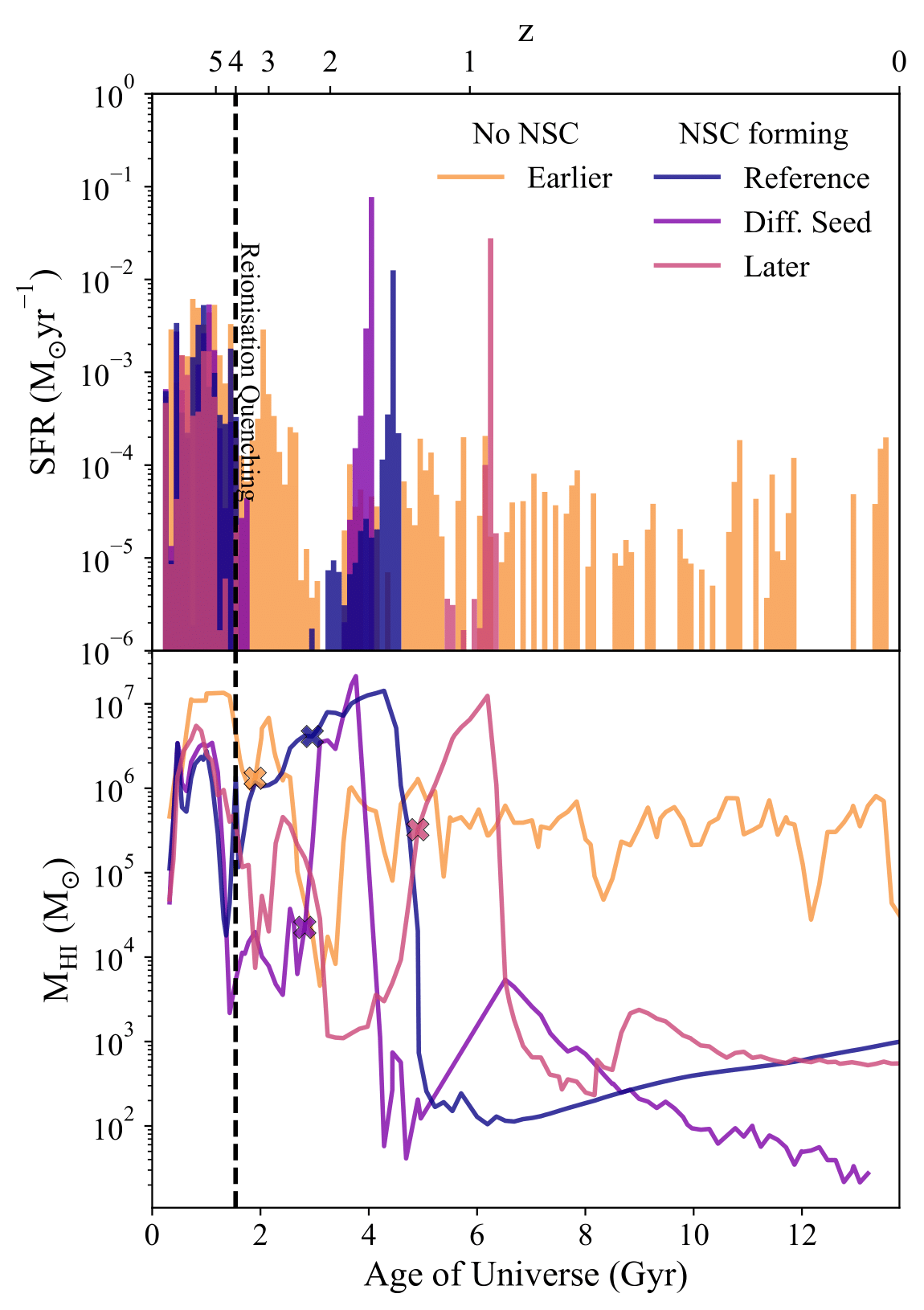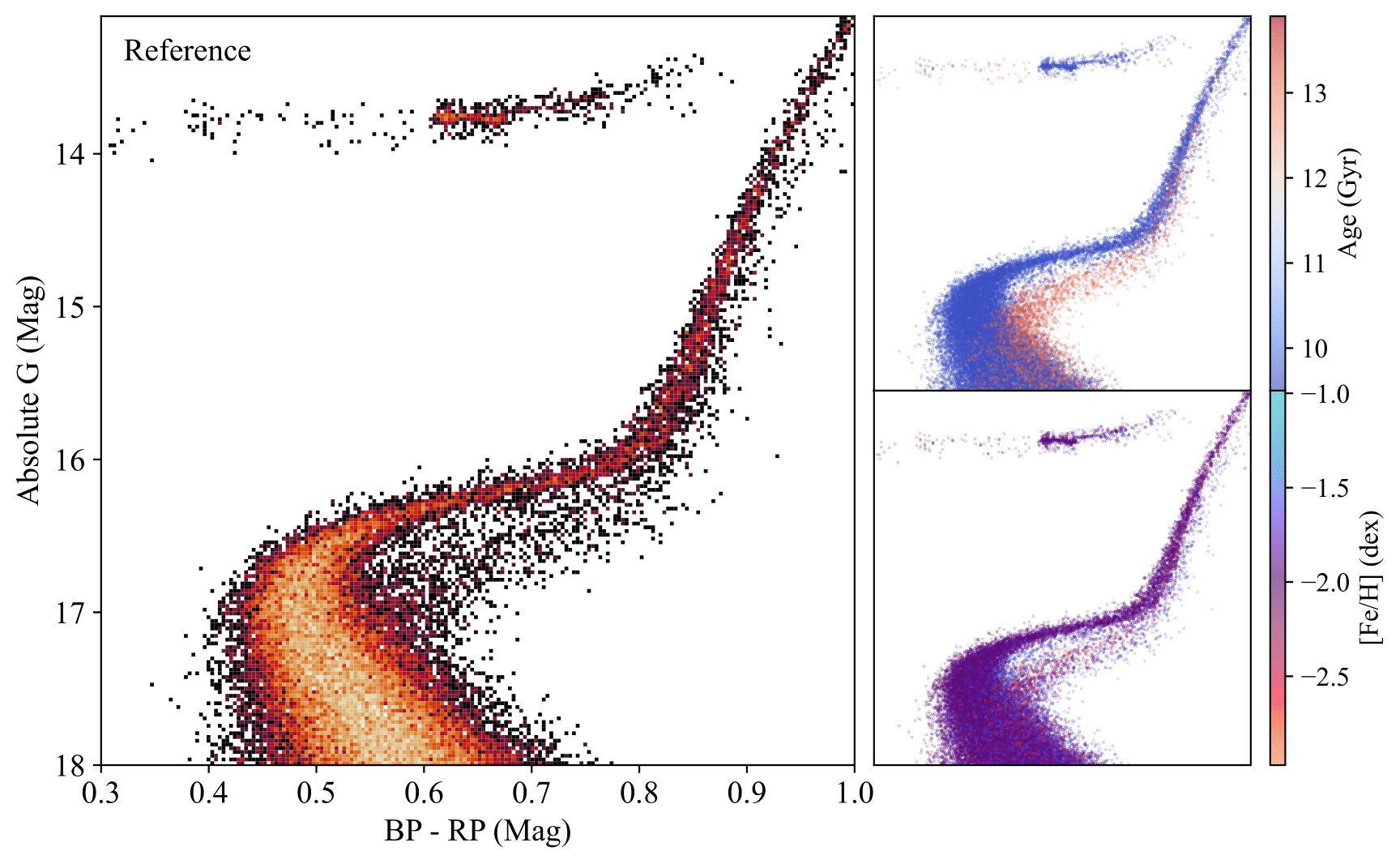EDGE: A New Model for Nuclear Star Cluster Formation in Dwarf Galaxies
Emily I. Gray, Justin I. Read, Ethan Taylor, Matthew D. A. Orkney, Martin P. Rey,Robert M. Yates, Stacy Y. Kim, Noelia E. D. Noël, Oscar Agertz, Eric Andersson, and Andrew Pontzen
Nuclear star clusters (NSCs) are among the densest objects in the Universe, and are present within the centres of an abundance of different galaxies, including up to about 40% of dwarfs. Their origin and formation mechanisms remain uncertain. In EDGE, we naturally form NSCs within a subset of our low-mass dwarfs with present-day halo masses 5×109 M⊙ and stellar masses about 106 M⊙. These exhibit properties of observed NSCs such as a double Sersic surface brightness profile, with an inner bright bump. Key NSC proporties are listed:- dex
In this paper, we investigate the formation of these NSCs, their observational properties, and compare them to observed GCs.
Formation
NSCs in EDGE form as a result of a high star formation rate (SFR) starburst in low-mass dwarf galaxies. This starburst occurs about 2 billion years after reionisation quenching, due to a major merger event. This major merger compresses the halo's gas, forming a dense central gas reservoir which is dense enough, but not cold enough to form stars. Eventually, once the merger event has fully completed, a cooling instability cools all the central dense gas suddenly, causing a strong NSC-forming starburst. See the diagram below for a summary of this mechanism:

Effects of Stochasticity and Assembly History
To fully understand this new NSC formation mechanism, we consider three "genetically modified" versions of the same galaxy, engineered to have the major merger earlier and later. We also resimulate the same galaxy with a different random number seed to study the impact of stochastisity (that impacts both when stars form, and when they explode). The Reference, Different Seed, and Later former all form an NSC and have qualitatively similar star formation histories, and HI gas build-ups:

The Earlier former, being modified to be more massive at these early times, can induce cooling and continuously form stars throughout its merger (Rey et al 2020). As a result, it does not form a reservoir of gas. The lack of a dense gas reservoir makes its merger-induced starburst much less dramatic. As a high enough SFR is needed to form an NSC, it does not form in this case.
Observational Properties
Our model makes a number of key observational predictions:
- Mock CMDs of the inner stellar populations display clear split main sequence turnoffs due to the large age separation in the pre-reionisation and starburst stellar populations. Such split populations have already been observed in many bright GCs in the Milky Way. Our model suggests that these clusters, especially those which also have a significant [Fe/H] spread, could be accreted NSCs.
- The average [Fe/H] and [O/Fe] of our simulated NSCs are ∼2 ±0.1 dex and 0.5 ±0.1 dex, respectively. We qualitatively reproduce both the anti-correlation between iron and oxygen found in GCs that show significant [Fe/H] spread, and the overall shape of the [Fe/H] distribution.
- Our pre-reionisation and starburst stellar populations are distinct, with the older pre-reionisation population being kinematically hotter. This could serve as an observational indicator as to whether a galaxy has an NSC formed in a similar way to our model.

If you would like to read this research paper in full, you can do so from the following sources: ADS, MNRAS, or arxiv.



